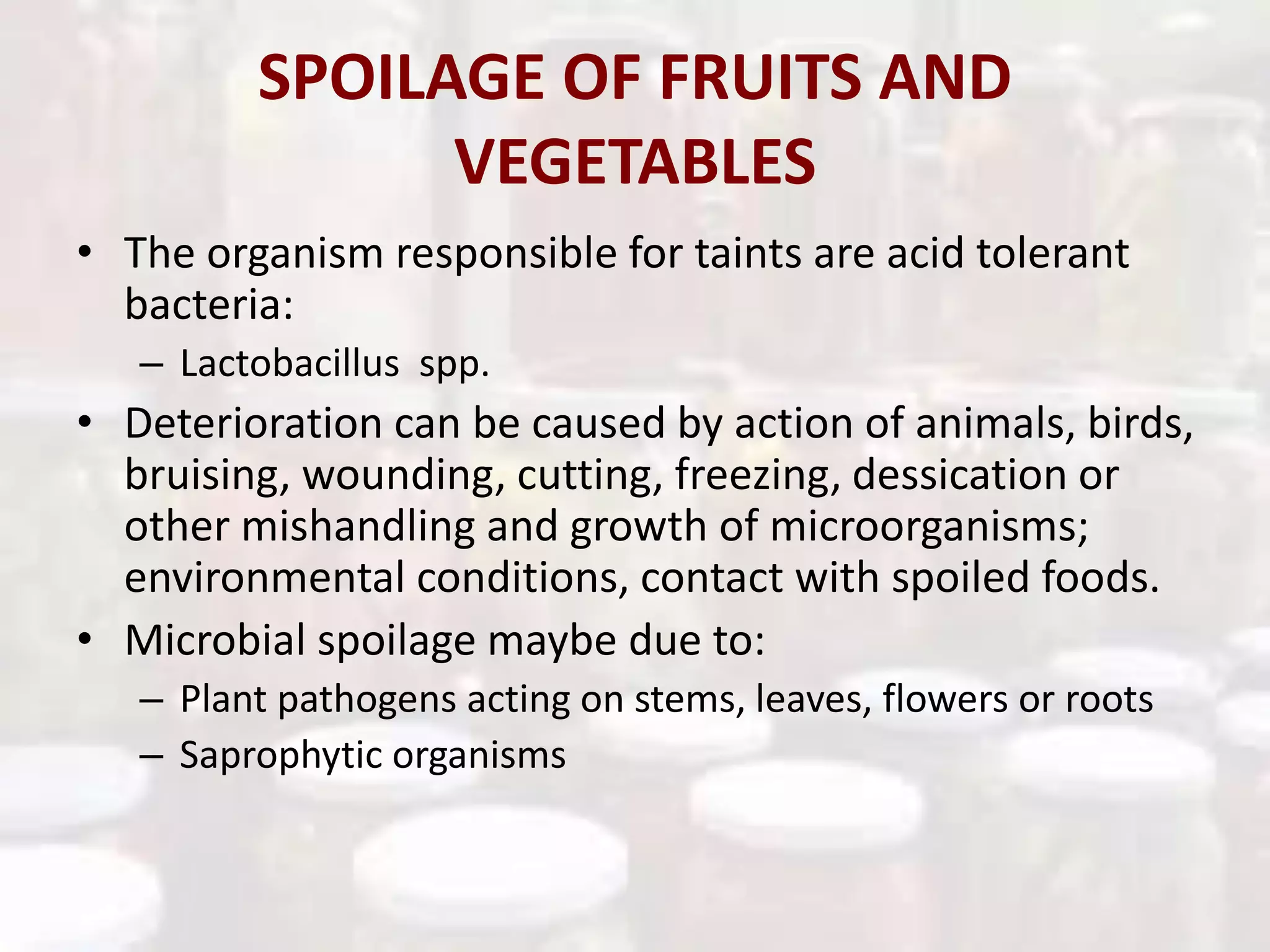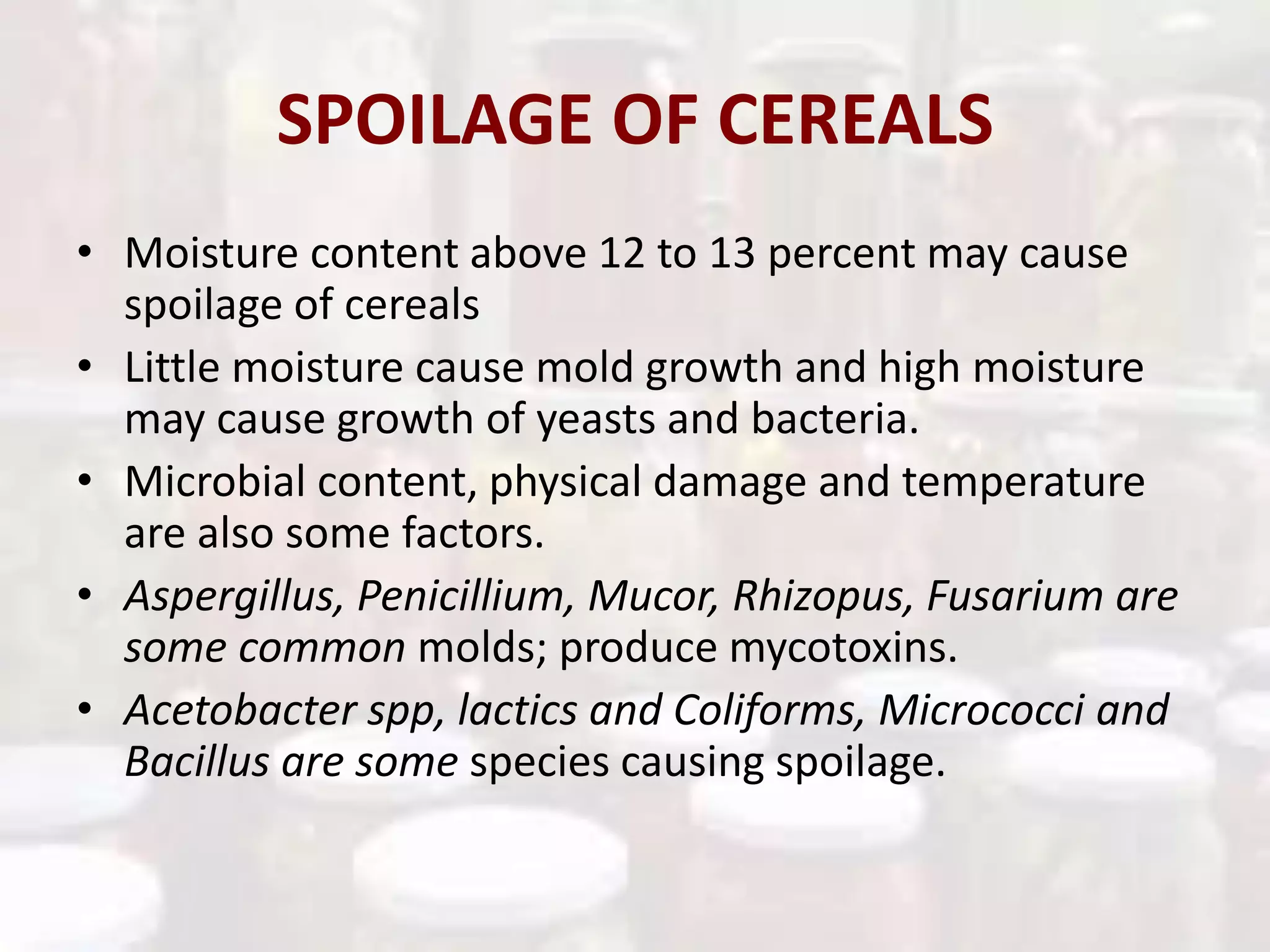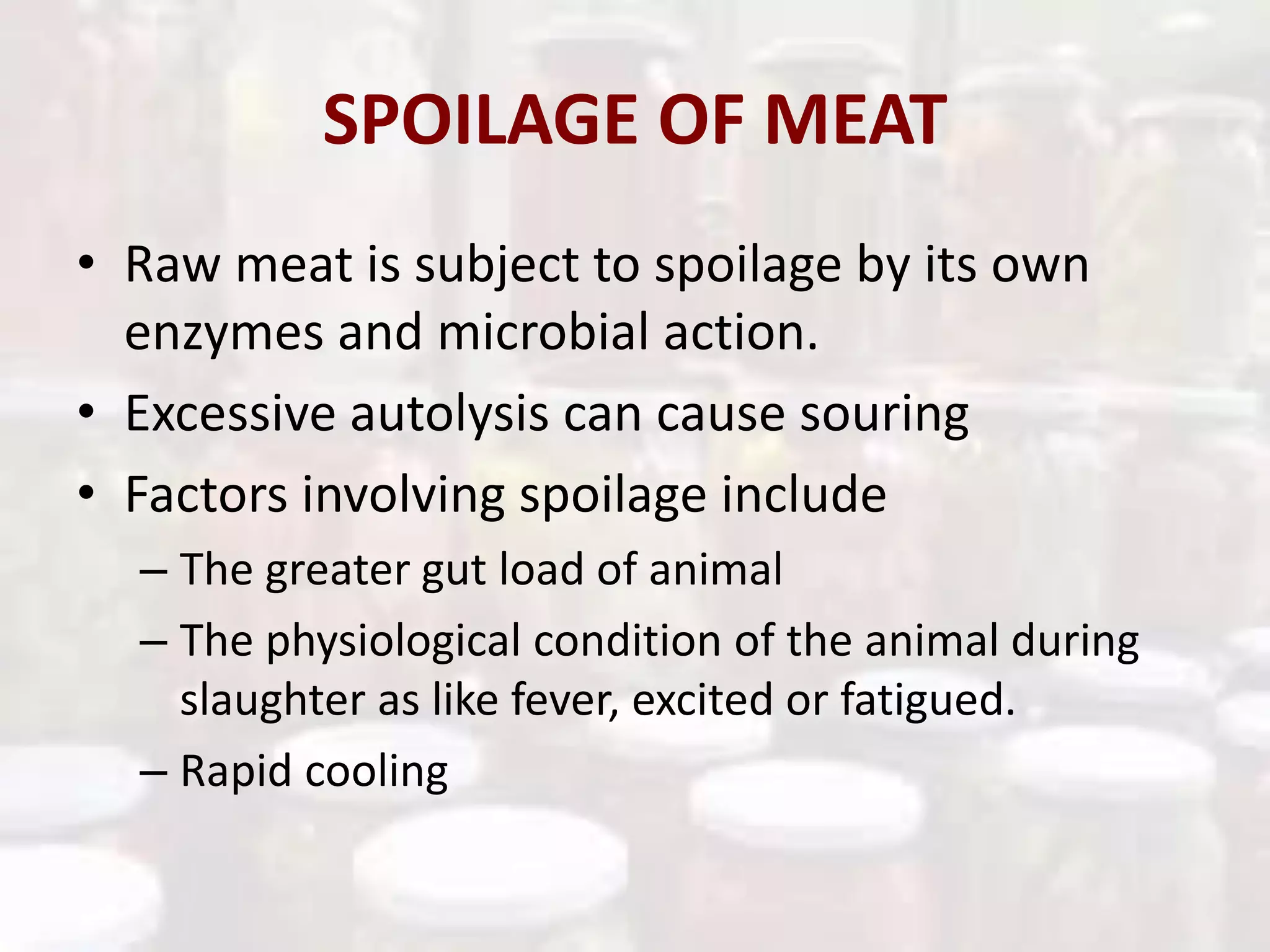The document discusses various types of microbial spoilage in fruits, vegetables, cereals, milk, meat, fish, and eggs, detailing the organisms responsible and the conditions leading to spoilage. It highlights the impact of microbial action, physical damage, and environmental conditions on food deterioration, as well as the potential health risks associated with spoiled food. Additionally, it emphasizes food preservation methods aimed at preventing spoilage and maintaining food quality.

















